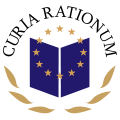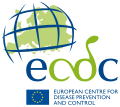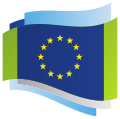Symbols of Europe
It has been suggested that this article should be split into articles titled Europe Day and In varietate concordia. (discuss) |
Template:Life in the European Union The Council of Europe (COE) has developed series of European symbols for the continent of Europe, and these have since been shared with the European Union (EU). They are intended both as symbols of the organisations themselves, and as a focus for a form of Pan-European identity.
Flag
The flag of Europe is twelve golden stars (pointing upwards) in a circle on a blue background. Although the flag is most commonly associated with the European Union, it was initially used by the Council of Europe in 1955, and is considered to represent Europe as a whole as opposed to any particular organisation such as the EU or the COE.
The flag was adopted in 1985 by all EU heads of State and government as the official emblem of the European Union and, since the beginning of 1986, it is used by all European institutions.
The Council of Europe — which does not have an organic link with the European Union — owns the intellectual property of the European flag.
The flag has also given Europe its "national colours" of blue and gold (yellow).
Emblems
Institutions and bodies
Interinstitutional services and agencies (decentralised organisations)
Anthem
(Dernier mouvement de la Neuvième symphonie (Ode à la joie) / van Beethoven, Ludwig (compositeur); von Karajan, Herbert (arrangeur))

Template:Sample box start variation 2
Template:Multi-listen end Template:Sample box end In 1971 the Parliamentary Assembly of the Council of Europe decided to propose adopting the prelude to the Ode To Joy from Beethoven's 9th Symphony as the European anthem. The Council of European Ministers officially announced the European Anthem on January 19th 1972 at Strasbourg: the prelude to "The Ode to Joy", 4th movement of Ludwig van Beethoven's 9th symphony.
The well-known conductor Herbert von Karajan was asked to write three instrumental arrangements — for solo piano, for wind instruments and for symphony orchestra and he conducted the performance used to make the official recording. He wrote his decisions on the score, notably those concerning the tempo. Karajan decided on crotchet = 120 whereas Beethoven had written minim = 80.
The anthem was launched via a major information campaign on Europe Day, 5 May 1972.
In 1985, it was adopted by EU heads of State and government as the official anthem of the then European Community — since 1993 the European Union. It is not intended to replace the national anthems of the Member States but rather to celebrate the values they all share and their unity in diversity. It expresses the ideals of a united Europe: freedom, peace, and solidarity. [1].
The European anthem is based on the final movement of Beethoven's 9th Symphony composed in 1823, which contains a modified version of the lyrics of Friedrich Schiller's ode, An die Freude (German for Ode To Joy) written in 1785. This poem expresses Schiller's idealistic vision of the human race becoming brothers — a vision Beethoven shared.
It is played on official occasions by both the Council of Europe and the European Union.
Due to the large number of languages used in the European Union, the anthem is purely instrumental and the German lyrics have no official status. For the German lyrics refer to the article about the 9th Symphony. Suggested Latin lyrics to the anthem have been written by the Austrian composer Peter Roland, but these lyrics have not been accorded official status, and are not used by the EU [2]. The anthem with Latin lyrics was sung by the Spanish singer Miguel Ríos in 1970.
To some people the use of music arranged by Herbert von Karajan is contentious, as he willingly joined the Nazi party in 1935.[citation needed]
Europe Day

The Council of Europe has celebrated its founding on 5 May, 1949 as "Europe Day" since 1964.
What is now the European Union adopted 9 May as "Europe Day" at the Milan summit in 1985, to celebrate that Robert Schuman presented his proposal on the creation of an organised Europe, indispensable to the maintenance of peaceful relations, on 9 May, 1950. This proposal, known as the Schuman declaration, is considered by many to be the beginning of the creation of what is now the European Union.
9 May is now the more commonly observed date, though some Europeans still prefer 5 May, since the Council of Europe was designed to defend human rights, parliamentary democracy and the rule of law, while the Schuman speech was simply proposing a sharing of French and German coal and steel. Incidentally, May 9 is also celebrated in many former Soviet Union countries as Victory Day, the end of World War II. This is celebrated on May 8 in most Western European countries, but is celebrated on May 5 in the Netherlands.
Motto
An EU motto, In varietate concordia (Latin for united in diversity), was first established through an unofficial process in 2000. It was selected from entries proposed by school pupils submitted to the website www.devise-europe.org, and then accepted by the President of the European Parliament, Nicole Fontaine. The modified version, United in diversity, has been written into the English-language version of the currently stalled Constitution for Europe, and now appears on official EU websites. See www.eurominority.org for the motto in many languages not listed below.
Interestingly, the proposed change would make the motto essentially the same as the South African motto officially adopted in 2000-04-27: "!ke e: /xarra //ke" in /Xam, an extinct Khoisan language. "Bhinneka Tunggal Ika", translated as "Unity in Diversity", is also the national motto of Indonesia. It is also similar to "E pluribus unum" (Latin for "out of many, one"), one of the mottos of the United States of America (although this refers to the fifty states comprising the Union and not the diversity of its population.) Unity in diversity is the present official motto of Papua New Guinea.
In the official languages of member-states of the EU
- Bulgarian - Единни в многообразието
- Czech - Jednota v rozmanitosti
- Danish - Forenet i mangfoldighed
- Dutch - Eenheid in verscheidenheid
- English - United in diversity
- Estonian - Ühinenud mitmekesisuses
- Finnish - Erilaisuudessaan yhdistynyt / Moninaisuudessaan yhtenäinen
- French - Unis dans la diversité
- German - In Vielfalt geeint
- Greek - Ενότητα στην πολυµορφία
- Hungarian - Egység a sokféleségben
- Irish - Aontaithe d'ainneoin na héagsúlachta
- Italian - Uniti nella diversità
- Latvian - Vienotība dažādībā
- Lithuanian - Vienybė įvairialypiškume
- Maltese - Magħqudin fid-diversità
- Polish - Jedność w różnorodności
- Portuguese - Unidos na diversidade
- Romanian - Uniţi în diversitate
- Slovak - Zjednotení v rozmanitosti
- Slovene - Združeni v raznolikosti
- Spanish - Unidos en la diversidad
- Swedish - Förenade i mångfalden
In other languages used by EU citizens
- Armenian - Miutyun` bazmazanutyan mej
- Aragonese - Unitos en a dibersidá
- Basque - Aniztasunean bat eginik
- Belarusian - Адзінства ў разнастайнасці
- Breton - Unanet el liested
- Catalan - Units en la diversitat
- Corsican - Uniti in a diversità
- Esperanto - Unuiĝintaj en diverseco
- Frisian - Ienheid yn ferskaat
- Galician - Unidos na diversidade[citation needed]
- Hebrew - מאוחדים בגיוון
- Latin - In varietate concordia
- Luxembourgish - Eenheet an der Verschiddenheet
- Russian - Единство в разнообразии
- Sardinian - Umpare in sa diversidade.
- Scots - Ae mynd, monie kynd[citation needed]
- Scottish Gaelic - Aonachd ann an eugsamhlachd
- Welsh - Yng nglym mewn gwahaniaeth
- Rusyn - Единство в раздилности
- Turkish - Çoklukta birlik
- Ukrainian - З'єднанi в рiзноманiтностi (Zjednani v riznomanitnosti)
In languages used in the candidate countries
- Croatian - Ujedinjeni u raznolikosti
- Macedonian - Обединети во различноста
- Turkish - Çoklukta birlik
In languages used in the potential candidate countries
Draft EU constitution
The European Convention proposed in Article IV-1 (The symbols of the Union) of its draft Constitution for Europe, July 18, 2003:
- The flag of the Union shall be a circle of twelve golden stars on a blue background.
- The anthem of the Union shall be based on the Ode to Joy from the Ninth Symphony by Ludwig van Beethoven.
- The motto of the Union shall be: United in diversity.
- The currency of the Union shall be the euro.
- 9 May shall be celebrated throughout the Union as Europe day.
See also
External links
- "The symbols of the EU", Europa website.
European flag
- Council of Europe Logo and the European Flag
- European Flag and Insignia
- Why the European flag has been chosen : European Navigator
European anthem
- Original choir version
- The European Anthem and downloads - Council of Europe website
- The European Anthem - European Commission website
- Easybyte - free easy piano arrangement of "Ode to Joy / EU European Union Anthem" plus midi sound file
- European anthem European Navigator
Europe day
- Good background by the European Commission Representation in the United Kingdom
- An article on Europe Day and the European Union by Mark Steyn
- European commission poster: European Navigator
European motto
- Draft European constitution, 18 July 2003, Article IV-1, The symbols of the Union. (It's on top of p222 in all languages but Swedish.)
- Une devise pour l'Europe
- The EU at a glance (official EU site)
- The European motto (Eurominority site)












